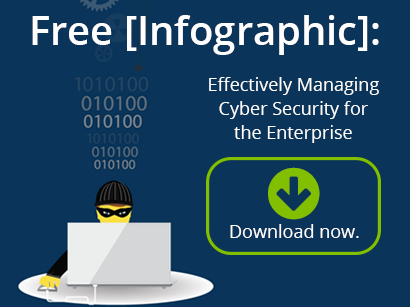 Happy New Year! As we say hello to 2018, we can reflect on the massive progress technology made throughout 2017. The cloud came to a new level of maturity, cybersecurity incidents rocked the world and organizations embraced hyperconverged infrastructure as the future of data center modernization. But what lies ahead? Read on for a look at cybersecurity predictions for the coming year.
Happy New Year! As we say hello to 2018, we can reflect on the massive progress technology made throughout 2017. The cloud came to a new level of maturity, cybersecurity incidents rocked the world and organizations embraced hyperconverged infrastructure as the future of data center modernization. But what lies ahead? Read on for a look at cybersecurity predictions for the coming year.
What’s Ahead for Cybersecurity in 2018?
1. Digital Extortion Moves Beyond Ransomware
While ransomware was a pervasive threat in 2017 and is predicted to continue into 2018, we will begin to see other forms of digital extortion. Trend Micro predicts, “[Ransomware is] anticipated to make further rounds in 2018, even as other types of digital extortion become more prevalent. Cybercriminals have been resorting to using compelling data as a weapon for coercing victims into paying up. With ransomware-as-a-service (RaaS) still being offered in underground forums, along with bitcoin as a secure method to collect ransom, cybercriminals are being all the more drawn to the business model.”
2. Cyberattacks Will Continue Using AI as a Weapon
Artificial intelligence isn’t just being used to power our handheld digital assistants and analyze trends using big data; they are also being put to use as a powerful tool to perpetrate cyberattacks. CSO breaks down four ways they can be used to breach your organization’s security defenses:
- AI-powered password guessing
- Advanced pattern recognition attacks
- Spam and phishing attacks using chat-bots
- Using AI to create patterns and circumvent behavior analysis security strategies
While these tactics have been around for a while, expect to see the number increase in the coming year, vastly increasing the need for working with a trusted IT solutions provider.
3. Cyber Risk Will Shift from Infrastructures to Applications
Last year’s massive Equifax breach is a prime example of this new threat that will continue to plague enterprises in 2018. “As web apps have evolved from basic information and ecommerce functionality to full-fledged online services, their code and customer data have made them an increasingly appealing target for hackers. Not only are they accessible via the open Internet—they’re also woefully under protected, with the application layer drawing only 3 percent of the typical security budget at a time when it accounts for 30 percent of successful breaches, according to Verizon.”
4. SaaS Cybersecurity Becomes a Pain Point
The rise in organizations adopting Software as a Service solutions will lead to challenges in managing them and maintaining strong enterprise security. As TechArp predicts, “This rate of change and adoption presents many security challenges as access control, data control, user behavior and data encryption vary significantly between SaaS apps.”
5. Stronger Industry Cybersecurity Regulations
With the massive breaches of 2017, IT solutions providers like us have learned a thing or two about protecting organizations from these digital attacks. Because of these high-profile attacks, expect to see regulations tighten and prevention tactics increase in the coming year.
6. Tighter Privacy and Data Control
While data privacy wasn’t previously tied to cybersecurity, Forbes predicts that will change this year. “With serious global regulations kicking into effect, and with the regulatory responses to data breaches increasing, organizations will build new data management frameworks centered on controlling data – controlling who sees what data, in what state, and for what purpose.”
Helpnet Security notes, “With the broad move to DevOps and cloud, we face a generational opportunity to change the way we do security and get it right. Security groups should seize on the shift to new architectures and models as it's the perfect time to modernize and adapt their strategy. That means moving resources to match risk.”
Next Steps: To protect your organization from threats this coming year, check out our infographic, “Effectively Managing Cyber Security for the Enterprise.”











